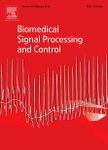版权所有:内蒙古大学图书馆 技术提供:维普资讯• 智图
内蒙古自治区呼和浩特市赛罕区大学西街235号 邮编: 010021

作者机构:Southwest Univ Sci & Technol Sch Informat Engn Mianyang 621010 Peoples R China Univ Elect Sci & Technol China Mianyang Cent Hosp Sch Med Mianyang 621010 Peoples R China Mianyang Cent Hosp NHC Key Lab Nucl Technol Med Transformat Mianyang 621010 Peoples R China
出 版 物:《BIOMEDICAL SIGNAL PROCESSING AND CONTROL》 (生物医学信号处理与控制)
年 卷 期:2024年第96卷第PartA期
核心收录:
学科分类:0831[工学-生物医学工程(可授工学、理学、医学学位)] 10[医学]
基 金:National Natural Science Founda-tion of China Natural Science Foundation of Sichuan Province [2024NSFSC0664] Doctoral Re-search Fund Project of Southwest University of science and Technology [22zx7110]
主 题:Medical image segmentation UNet CNN ViT
摘 要:The efficient segmentation of medical image is of great significance for clinical diagnosis. Recently, TransUNet has achieved great success in medical image segmentation by effectively fusing Convolutional Neural Networks (CNN) and Vision Transformer (ViT) to accomplish the extraction of local and global information. However, since TransUNet is designed as a stitching of CNN and ViT framework level, it has the following problems to be solved: 1) only local and relatively global spatial features of images are extracted;2) the direct introduction of ViT brings the disadvantages of not easy training and high computational overhead. Therefore, in this work, we propose Mixblock, a hybrid encoder that effectively fuses the superiority of CNN and ViT and is capable of extracting multidimensional high-level semantic information of images instead of being limited to local and global spatial features. Based on this, we design a UNet-like method MixUNet for medical image segmentation, which is a concise and efficient baseline network. Specifically, MixUNet is able to converge after less training without any pre-training, and its number of parameters and computation are only 3.17% and 4.99% of those of TransUNet. In addition, we creatively introduce frequency domain information on skip connection to eliminate the semantic ambiguity between the encoder and decoder, which provides a new perspective for medical image segmentation. Finally, we perform extensive experiments on three publicly available medical image datasets. Experimental results show that MixUNet has significant superiority in segmentation performance, model complexity, and robustness compared to state-of-the-art baseline methods.